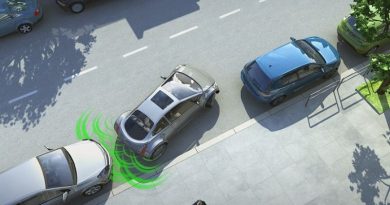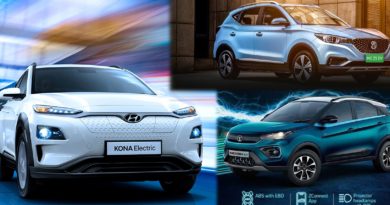Battery chemistries driving the electric vehicles and the evolution of battery materials
Ganesh Venugopal observes how we came to the battery materials of today and how this space is poised to evolve going forward. This article was first published in June 2021 edition of EVreporter e-magazine.
With the imminent electrification of the global transportation fleet, Lithium-Ion (Li-Ion) battery technology is expected to play an increasingly important role in emerging electric vehicles. Bloomberg NEF projected that in 2020, 2.7% of all passenger vehicles sold globally would have an electric powertrain. This number is estimated to rise to >25% by 2030, and >50% by 2040.
Constituents of a Li-ion battery cell

- A typical EV battery is an energy storage system (pack) usually made up of several modules consisting of individual cylindrical (metal-can), flat (polymer-laminate pouch) or prismatic (metal-can) Li-ion cells.
- Each cell consists of the active electrode materials – the anode and the cathode – which perform the electrochemical energy storage function of the battery.
- In addition, each cell also houses several ancillary materials (e.g., electrolyte, separator, current collector) that assist the anode and cathode in performing the energy storage and charge-discharge functions.
While the energy storage capacities (specific energy density) of the anode and cathode are the primary determining factors for the energy density of the EV battery pack and therefore the driving range of the EV, the ancillary materials, as well as the module and pack design also determine the total energy density of the EV battery pack.
In the next section, we examine the materials commonly used for each of these parts and the latest developments in the area.
Cathodes
Market analysis firm, Avicenne Energy projected that the 2020 production volume of cathode materials was approximately 500,000 metric tons.
Lithium metal oxides (LiMO) have been the work-horse cathodes for at least the last four decades and will continue to be on the materials roadmap for the foreseeable future.
- When Li-ion batteries were introduced into portable electronic products, the M in LiMO was primarily Cobalt (as in Lithium Cobalt Oxide – LCO or LiCoO2), with Manganese (as in Lithium Manganese Oxide – LMO or LiMn2O4) also being used in niche devices.
- In the pursuit for higher energy density cathodes, Nickel Cobalt Aluminum (as in LiNi0.80Co0.15Al0.05O2 – NCA) and Nickel Cobalt Manganese (as in LiNixCoyMnzO2 (x+y+z=1) – NCM) chemistries were introduced.
- Early electric vehicles like the Nissan Leaf utilized LMO cathodes in flat cells to form packs providing a driving range of <100 miles per charge. The battery pack was made by AESC, a Nissan and NEC Corp. collaboration. At around the same time, Tesla teamed up with Panasonic Battery and introduced cylindrical-cell NCA containing batteries with a higher driving range (>200 miles per charge). The higher driving range was achieved at a significant price premium.
- EVs with NCM-based batteries soon followed, introduced by battery manufacturers like LG, Samsung SDI and SK Innovation. While the early versions of this chemistry, with 1:1:1 Ni:Co:Mn ratios (NCM 111), had lower energy densities compared to NCA, the NCM class of materials is versatile in that the metal compositions can be adjusted to achieve higher energy densities. This opened a wide variety of possibilities to enhance energy densities, progressing from NCM 111 to NCM 523, 622, 712, 811.
Another advantage to making this transition is that the Cobalt content of the cathode is reduced. In addition to being the most expensive metal in the cathode, cobalt is also burdened by its questionable mining practices. NCM chemistries are expected to carry EV Li-ion batteries well into this decade, enabling higher density batteries at lower prices.
In parallel, another cathode material, Lithium Iron Phosphate (LiFePO4, LFP), has also found its place in the commercial EV battery product space. While lower in energy density, LFP is lower in cost and has better inherent thermal stability and safety characteristics, compared to NMC materials. Chinese battery makers like CATL and BYD have successfully commercialized LFP batteries in several EVs in China. Recently, base Tesla Model 3s sold in China were reported to be shipping with LFP batteries. The higher thermal stability of the LFP batteries allows for simpler pack designs. In some cases, like the BYD Blade battery, LFP containing cells can be directly integrated into packs (Cell2Pack), by-passing module-level packaging. This approach lowers costs and allows higher packaging efficiency, which translates to improved energy densities and driving range, compared to conventional LFP packs.
The EV market analysis firm RhoMotion estimates that the approximate present-day utilization of cathode materials is: NCM: 60%, LFP: 25%, NCA: 14% and LMO:<1%.
Anodes
Avicenne Energy projected that the 2020 production volume of anode materials was approximately 324,000 metric tons.
In comparison to cathodes, anode chemistries have been relatively less varietal. Carbon (C) materials, like amorphous Carbon, Natural Graphite and Synthetic Graphite have been the work-horse anodes, since the introduction of the first commercial Li-Ion batteries in the early 1990s. That trend has continued through to the present day, with advances in the processing of these materials leading to significant improvements in capacity and safety performance over the years.
- A more recent trend is the introduction of Silicon (Si) into Graphite (C) anodes, to enhance energy density. To date, these C-Si anodes are a small minority in commercially sold EV batteries.
- Another anode of note is a low voltage LiMO called Lithium Titanium Oxide (Li4Ti5O12 – LTO), which is known for its high thermal stability and long calendar life. The lower voltage of LTO, compared to the afore-mentioned LiMO cathodes, allows battery makers to use it as an anode with higher voltage LiMO cathodes. However, LTO batteries have lower energy densities than C or C-Si based batteries. They have found their niche in other applications like electric buses and stationary storage.
RhoMotion estimates that the current utilization of anode materials is: Natural graphite: 53%, Synthetic Graphite: 43%, Silicon (as additive to Graphite): 3%, LTO: 1%.
Ancillary Components
While the active materials selection sets the base line for the storage capacity and driving range for any EV, ancillary components (i.e., separators, electrolytes, current collectors etc.) determine the optimum and safe utilization of the storage capacity.
These components are tailored to ensure that the energy can be delivered to the vehicle at high enough power densities to achieve the desired propulsion. Optimum design of these ancillary components is also essential to achieving the desired charge rates for the batteries, both from external charging and regenerative braking.
The high energy storage electro-chemistries in Li-Ion batteries also introduces an inherent thermal stability issue in these systems. Overcharge or internal shorting of any cell could lead to a thermal runaway event and battery failure. On rare occasions, this failure mechanism could result in vehicle fires. Preventing and managing these runaway events has been possible due to careful engineering of the active materials, as well as the ancillary components. Both the charge-discharge capabilities and the safety aspects of the cell can be managed at the cell, module and pack levels as discussed further.
Cell, Module & Pack Design

Three cell formats have been adopted for building EV battery modules and packs.
- Cylindrical can cells have been standardized to two sizes, 1865 (18mm diameter x 65mm tall) and 2170 – both are used mostly by Tesla in battery packs made by Panasonic. Larger 4680 formats have been planned for production both at Tesla and Panasonic factories. These larger cells allow for higher packaging efficiencies and higher energy densities, with a projected 15% increase in driving range while also reducing production costs ($/kWh). To optimize power, other cell design parameters, like current collectors and tabs also must be tailored.
- Flat or pouch cell form factors are used by most other automotive manufacturers, including Ford, GM, Kia, VW, TATA-JLR and Hyundai – with battery packs manufactured by the likes of LG, SKI and CATL.
- To a lesser extent, prismatic (rectangular cross-section) can cells have also been used in some battery packs made by Samsung SDI and BYD for cars made by BMW BYD and Fiat.
Module and pack design, including the Battery Management System electronics and software, also play a key role in optimizing driving range, charge rates and thermal management to manage the safety and lifespan of the battery packs. Finally, cell, module and pack designs also take into consideration production costs.
BNEF estimates that the average production cost of an EV battery pack was <$150/kWh in 2020 and will dip below $100/kWh in 2023 – compared to >$1000/kWh in 2010.
Emerging Materials & Roadmap

For the near future, NCM cathodes and Graphite (with Silicon additive) anodes are expected to be the most favored chemistry for EV Li-ion batteries, with a trend to increasing Nickel and reducing Cobalt in the NCM and increasing Silicon in the anode. Beyond NCM 811, NCM 955 materials are also in the pipeline.
Further increases in capacities with LiMO materials will require a transition to so-called excess Lithium composition materials in perhaps 3-5 years. While most of the LiMOs discussed thus far contribute one Lithium-ion per molecule to the energy storage process, the excess-Li materials contribute more than one Lithium-ion per molecule for Lithium-ion storage, thereby providing an avenue for increasing energy density. Concurrent advances in electrolyte technologies, i.e. high-voltage electrolytes, would also be required for some of the emerging LiMO cathodes. Even further increase in cathode capacities will require a move away from LiMO materials to materials like Sulfur and Oxygen.
For anodes, a gradual increase in the Si content in C-Si materials could eventually lead to an all-Silicon anode. Improvements beyond Si anodes would most likely require transitioning to Lithium metal as in a Lithium-Metal battery. To enable Lithium-metal batteries, another innovation, the solid-state electrolyte, would have to be developed successfully and in parallel. Several materials science challenges need to be addressed to progress along the EV battery chemistry roadmap. With the current push for electrification of the global transportation fleet, the race to commercialize the next big battery chemistry is well underway.
References
- Electric Vehicle Outlook 2020: Bloomberg NEF Report (2020)
- Monthly EV Battery Chemistry Assessment – April 2021: RhoMotion Market Report (2021)
- Automotive Li-Ion Batteries: Current Status and Future Perspectives: Electrochemical Energy Reviews, Volume 2, Pages1–28 (2019)
- The Rechargeable Battery Market & Main Trends 2018-2030: Avicenne Energy Market Report (2019)
- BYD’S New Blade Battery Set to Redefine EV Safety Standards: BYD Press Release (2020)
- Tesla Motors Shareholder Meeting: Battery Day Presentation: Tesla Website (2020)
About the author

Ganesh Venugopal is an EV battery industry observer, based in Atlanta, GA, USA. He has spent more than 20 years developing Lithium-ion battery technologies in multi-national-corporation and startup settings. Ganesh has a PhD in the field of chemical and materials science, is an inventor in over 15 patents, and an author of over a dozen articles in journals, books & magazines. At present, he is the Director of Business Development for PhiChem America, a materials sciences and chemicals company serving the optical-fiber, display and electronics materials industries.
Subscribe today for free and stay on top of latest developments in EV domain.







This blog is very useful. we are Manufacture EV Charger with Super High Speed DC & AC Charger, 32 High Brightness Touchscreen for Advertisement & other parameters. Iconic world finest Design, awarded by Germany. See all Details of Top EV Charger Manufacturers in India